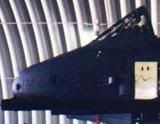<BLOCKQUOTE id=quote><font size=1 face="Verdana, Arial, Helvetica" id=quote>quote:<hr height=1 noshade id=quote>
Marvin Sambur, the Air Force's top acquisition official, wrote to the investigators that the program is within its cost, schedule and contract guidelines. Lockheed Martin has started delivering planes which meet Air Force specifications and the necessary upgrades have either been completed or scheduled, Sambur wrote.
While some of the facts presented in the DOD/IG report are accurate, the findings and conclusions ascribed to these facts cannot be supported," Sambur wrote in response to the inspector general's office. "The Air Force fully endorses the C-130J program."
It sounds like the USAF are complaining here on the C-130J, and they are the customer are they not?
<hr height=1 noshade id=quote></BLOCKQUOTE id=quote></font id=quote><font face="Verdana, Arial, Helvetica" size=2 id=quote>
The customers, if not happy, are satisfied. That includes the foreign ones too, and they have used them in combat support roles in Iraq.
Quick brochure comparisons from
http://www.globalsecurity.org/military/ ... c-130j.htm
<i>The new C-130J has the familiar silhouette, but it is a brand new airplane with the performance to prove it. Compared to the earlier production C-130E, maximum speed is up 21%, climb time is down 50%. Cruising altitude is 40% higher, range 40% longer. With new engines and props, the J can reach 28,000 feet in just 14 minutes. And for tricky low altitude maneuvers, new avionics and dual head up displays make it easier and safer to operate. It also offers reduced manpower requirements, lower operating costs, support costs, and life-cycle costs.
While continuing to upgrade through modification, the Air Force has budgeted to resume fleet modernization through acquisition of the C-130J version. This new model features a two-crew-member flight system, 6,000 shp Allison AE21 00D3 engines and all-composite Dowty R391 propellers, digital avionics and mission computers, and improved reliability and maintainability. </i>
Also from
http://www.af.mil/factsheets/factsheet.asp?fsID=92
<i>General Characteristics
Primary Function: Global airlift
Contractor: Lockheed Martin Aeronautics Company
Power Plant:
C-130E: Four Allison T56-A-7 turboprops; 4,200 prop shaft horsepower
C-130H: Four Allison T56-A-15 turboprops; 4,591prop shaft horsepower
C-130J: Four Rolls-Royce AE 2100D3 turboprops; 4,700 horsepower
Length: C-130E/H/J: 97 feet, 9 inches (29.3 meters)
C-130J-30: 112 feet, 9 inches (34.69 meters)
Height: 38 feet, 10 inches (11. 9 meters)
Wingspan: 132 feet, 7 inches (39.7 meters)
Cargo Compartment:
C-130E/H/J: length, 40 feet (12.31 meters); width, 119 inches (3.12 meters); height, 9 feet (2.74 meters). Rear ramp: length, 123 inches (3.12 meters); width, 119 inches (3.02 meters)
C-130J-30: length, 55 feet (16.9 meters); width, 119 inches (3.12 meters); height, 9 feet (2.74 meters). Rear ramp: length, 123 inches (3.12 meters); width, 119 inches (3.02 meters)
Speed:
C-130E: 345 mph/300 ktas (Mach 0.49) at 20,000 feet (6,060 meters)
C-130H: 366 mph/318 ktas (Mach 0.52) at 20,000 feet (6,060 meters)
C-130J: 417 mph/362 ktas (Mach 0.59) at 22,000 feet (6,706 meters)
C-130J-30: 410 mph/356 ktas (Mach 0.58) at 22,000 feet (6,706 meters)
Ceiling:
C-130J: 28,000 feet (8,615 meters) with 42,000 pounds (19,090 kilograms) payload
C-130J-30: 26,000 feet (8,000 meters) with 44,500 pounds (20,227 kilograms) payload.
C-130H: 23,000 feet (7,077 meters) with 42,000 pounds (19,090 kilograms) payload.
C-130E: 19,000 feet (5,846 meters) with 42,000 pounds (19,090 kilograms) payload
Maximum Takeoff Weight:
C-130E/H/J: 155,000 pounds (69,750 kilograms)
C-130J-30: 164,000 pounds (74,393 kilograms)
Maximum Allowable Payload:
C-130E, 42,000 pounds (19,090 kilograms)
C-130H, 42,000 pounds (19,090 kilograms)
C-130J, 42,000 pounds (19,090 kilograms)
C-130J-30, 44,000 (19,958 kilograms)
Maximum Normal Payload:
C-130E, 36,500 pounds (16,590 kilograms)
C-130H, 36,500 pounds (16,590 kilograms)
C-130J, 34,000 pounds (15,422 kilograms)
C-130J-30, 36,000 pounds (16,329 kilograms)
Range at Maximum Normal Payload:
C-130E, 1,150 miles (1,000 nautical miles)
C-130H, 1,208 miles (1,050 nautical miles)
C-130J, 2,071 miles (1,800 nautical miles)
C-130J-30, 1,956 miles (1,700 nautical miles)
Range with 35,000 pounds of Payload:
C-130E, 1,438 miles (1,250 nautical miles)
C-130H, 1,496 miles (1,300 nautical miles)
C-130J, 1,841 miles (1,600 nautical miles)
C-130J-30, 2,417 miles (2,100 nautical miles)
Maximum Load:
C-130E/H/J: 6 pallets or 74 litters or 16 CDS bundles or 92 combat troops or 64 paratroopers, or a combination of any of these up to the cargo compartment capacity or maximum allowable weight.
C-130J-30: 8 pallets or 97 litters or 24 CDS bundles or 128 combat troops or 92 paratroopers, or a combination of any of these up to the cargo compartment capacity or maximum allowable weight.
Crew: C-130E/H: Five (two pilots, navigator, flight engineer and loadmaster)
C-130J/J-30: Three (two pilots and loadmaster)
Aeromedical Evacuation Role: Minimum medical crew of three is added (one flight nurse and two medical technicians). Medical crew may be increased to two flight nurses and four medical technicians as required by the needs of the patients.
Unit Cost: C-130E, $11.9, C-130H, $30.1, C-130J, $48.5 (FY 1998 constant dollars in millions)
Date Deployed: C-130A, Dec 1956; C-130B, May 1959; C-130E, Aug 1962; C-130H, Jun 1974; C-130J, Feb 1999
Inventory: Active force, 186; Air National Guard, 222; Air Force Reserve, 106</i>
I don't think it is possible to substitute the T-56 for the AE2100D3 engine. There are too many differences.
The J model also holds many obscure aviation records for its class. It is a big improvement over previous models.
THE CRAPTOR ENGINEERING TEAM <img src=icon_smile_big.gif border=0 align=middle>
"The F-22...It's the poo"
Edited by - a10stress on Jul 26 2004 2:31 PM





